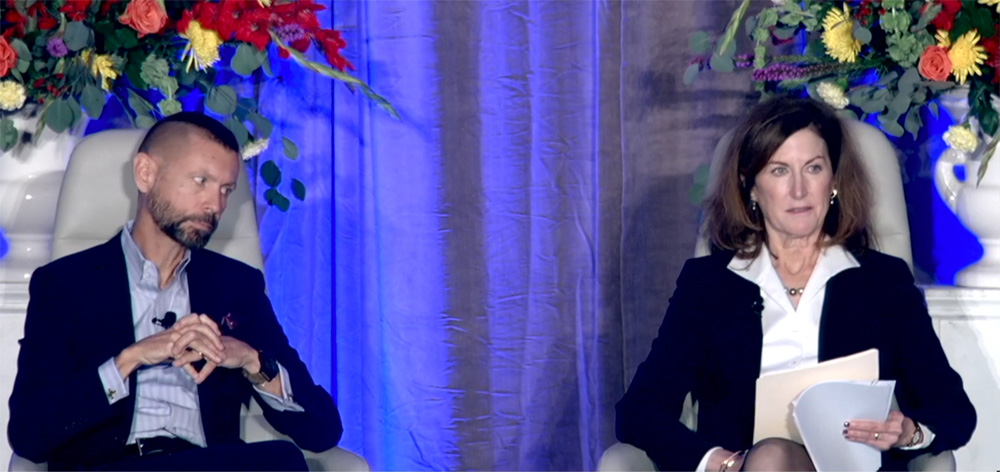LOUISVILLE, Ky. — Amid clashes with MISO on regional transmission planning and cost allocation, this week’s Entergy Regional State Committee meeting featured introductions to SPP’s and the Southeastern Energy Exchange Market’s (SEEM) workings.
SPP leadership and a SEEM delegate were on-hand to share the members’ experiences during the committee’s Tuesday meeting, held during the National Association of Regulatory Utility Commissioners’ annual meeting.
Louisiana regulator Eric Skrmetta, who in a fiery speech last month suggested forcing Entergy Louisiana to exit MISO for either SPP or SEEM, stood at the back of the room during the meeting. He didn’t comment. (See La. Regulators Threaten MISO Departure over Tx Costs.)
Former Kentucky Public Service Commissioner Talina Mathews, freshly hired as SPP’s director of state regulatory policy, described the RTOs planning process and cost allocation. She said the footprint’s regulators have control over cost allocation decisions, a “unique” setup among RTOs.
“Decisions are not made quickly or lightly,” Mathews said.
“I know that SPP takes their relationships with regulators very seriously,” Mississippi Public Service Commissioner Brandon Presley said.
Presley said SPP ensures their regulators have a “central” role, given they take the heat for system outages and missed forecasts. He likened MISO’s relationships with state commissioners to a spouse that’s only remembered at tax time. He also mentioned regulators being put through MISO’s “hellacious” stakeholder process.
“It just seems a big cultural difference,” Presley said.
Noel Black with Southern Co., one of SEEM’s founding members, told regulators that the market’s aim is to “get out of the way of the bilateral market.” He lauded his exchange’s simple market structure and minimal “disruption” to regulators.
FERC on Monday approved requests for the zero-cost transmission service that will used to deliver SEEM’s energy transactions. The market became effective “by operation of law” in October. (See SEEM to Move Ahead, Minus FERC Approval.)
Both the Mississippi and Louisiana commissions have hinted they would pull their utilities out of MISO if the RTO shares the bill from major Midwest transmission expansion with their South region. (See Mississippi PSC Audit Questions MISO Membership.)
Aubrey Johnson, MISO’s executive director of system planning, said regional transmission planning is “needed to accommodate the current and future resource fleet shift.”
MISO is currently studying about 10 Midwestern projects for possible approval in March. Johnson said after the first tranche of those projects is approved, the grid operator will turn its attention to studying the South’s regional needs. He said the first projects would likely be ready for approval in 2023.
Johnson said a proposed footprint-wide postage stamp rate isn’t realistic based on MISO’s current hourglass configuration, where the Midwest and South are constricted by the subregional transfer limit. He also said MISO South’s resistance to cost sharing played a role in the RTO’s current decision against a footprint-wide allocation. (See MISO Hopes Bifurcated MVP Cost Allocation Will be Temporary.)
Texas Public Utility Commission economist Werner Roth said the state supports a bifurcated cost allocation between the Midwest and South.




